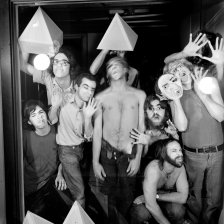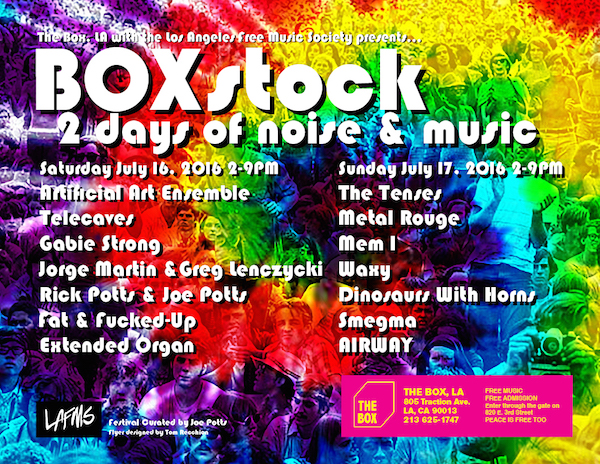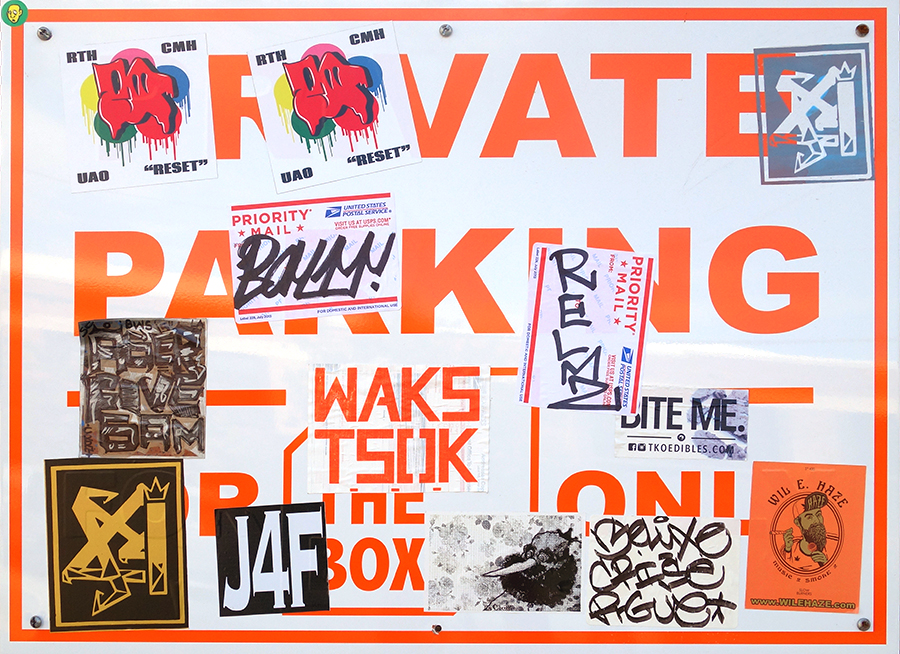
Los Angeles Free Music Society (LAFMS)
The Los Angeles Free Music Society (LAFMS) is a loose collection of like-minded noise anarchists from the mid-’70s who found commercial rock too boring, slick, and predictable, and set out to reinvent improvisation and sound experiments with a DIY ethic. Inspired by Zappa, Captain Beefheart, John Cage, the Residents, Dada, Surrealist, Pop and Post Minimal art, “bad” T.V., rural music, World music, Free Jazz, “outsider” rock, European and American Electro-acoustic music, Punk attitude, Musique concrete, suburban aesthetics, Acid Rock, and Japanese popular culture, the LAFMS struggled to shape a new art form. As their movement spread, they became a lightning rod for art-damaged, weird-music lovers everywhere.
The LAFMS have had immeasurable influence on the spread and evolution of noise and avant garde music and DIY culture over the past almost 40 years, with a trajectory of influence that is clearly demonstrable yet criminally under-documented. With their music combining loose experimental improvisation on both conventional instruments and household items with stuff taped off television cartoons or taken from records as well as lo-fi electronics, the LAFMS were pioneers of sampling, even as their D.I.Y. ethic paved the way for the punk movement a few years later. The LAFMS produced a catalog of recordings which have had an international influence. Many of those early releases introduced sampling, looping, circuit bending, record scratching and remixing techniques decades before their emergence in popular music.
The influence LAFMS has had on the explosion of international DIY culture is immeasurable. Explicitly acknowledged as a motivation for the emergence of the Japanese noise scene in the 1980s, as well as being cited specifically by the likes of Thurston Moore (Sonic Youth) and John Olson (Wolf Eyes), the collective that emerged in LA in 1973 resulted in countless adventurous music lovers tasting the delights of a new kind of creative freedom and getting out there and doing it for themselves.
In the summer of 1973, the threesome of Rick Potts, Joe Potts, and Chip Chapman started to record together. These tape experiments and improvised playing mixed early sampling from television cartoons with material appropriated from Chapman’s eccentric record collection. By 1974, they changed their name to the East Los Angeles Free Music Society to add the “aire of legitimacy” to their submission of “Ka-Bella-Binski-Bungo” to a European electronic music festival.
When Chapman stumbled upon the Residents self produced LP in 1974, he suddenly realized that anyone could put out their own record and the group, renamed Le Forte Four and now including Tom Potts, hurried to piece together their collection of tapes into the LP, “Bikini Tennis Shoes”. Unbeknownst to them, during this time another gang of experimental musicians with a similar bent gathered in the evenings at Poo-Bah Records in nearby Pasadena. Tom Recchion, who worked at the store, had formed the Two Who Do Duets with Harold Schroeder in March of 1975, and later that year the group transformed into the Doo-Dooettes with the addition of Juan Gomez, Dennis Duck and eventually Fredrik Nilsen. Others of the Pasadena crowd included Ace Farren Ford and the Professor (who performed as Ace & Duce with Rick Snyder and Dennis Duck) and Billy Bishop. Members of the avant-rock group Smegma, who had already been around for a couple years, were also part of the Poo-Bah Records scene, before they moved to Portland, OR, near the end of 1975. When Recchion arrived one evening with Le Forte Four‘s Bikini Tennis Shoes LP, the impressed Pasadena contingent realized they were not alone. The album’s liner notes introduced an entity called The Los Angeles Free Music Society, which Recchion immediately recognized could be used as a way identify the emerging movement. Soon Le Forte Four, the Doo-Dooettes and Ace and Duce were performing together live, billed as The Los Angeles Free Music Society.
In 1976, Joe Potts decided to put out a various-artists compilation with an open invitation, selling space on the record at two dollars for every 15 minutes as a way to allow others who couldn’t afford their own record to release material. This compilation, I.D. Art, featuring both LAFMS artists and others, came out later that year. This led to several Blorp Essette compilations set up along similar lines in 1978 and 1980, further widening the LAFMS web and their attitude that anyone should have the right to be on record. New projects were also formed out of the pool of LAFMS compatriots, from Joe Potts’ live noise-overload project Airway, formed in 1977; to John Duncan‘s CV Massage a couple years later; and even more groups in the 1980s like Solid Eye, Monique Eperience, Human Hands, Bpeople, Dinosaurs With Horns, Foundation Boo; as well as solo efforts by John Duncan, Joe Potts, Tom Recchion, Dennis Duck, Fredrik Nilson, and Chip Chapman. Though little has been released on the LAFMS label since the mid-’80s, many of the participants carried the spirit of the movement onward spawning subsequent generations of LAFMS related sound artists, while much of their own music is still as unsettlingly weird as it was in the mid-’70s.
"LAFMS people have hybridized avant-garde, experimental, improvisational, punk, pop
and even humorous stuffs. For Japanese fans, LAFMS has become a legend." -Takuya Sakaguchi, Osaka
“LAFMS were the New Weird America when nobody was payin’ attention 25-30 years
ago.” -Roland Woodbe, Siltblog
"Free ears and minds are one thing, but what about aesthetics?" -Hal Clark, 1974, Electronic Music Festival Hovikkoden Norway


